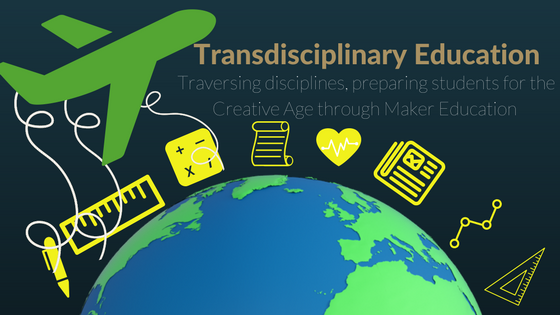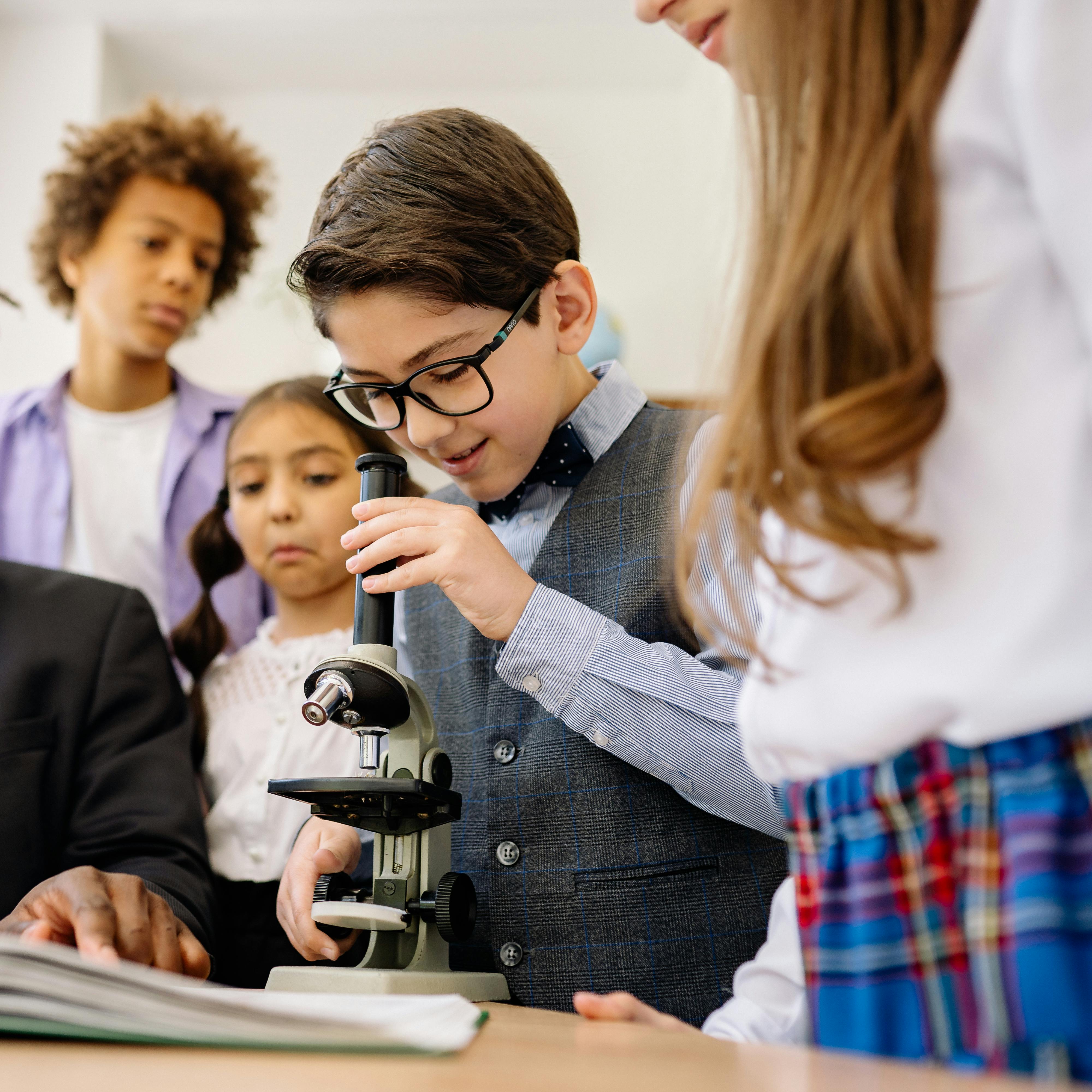Students are disengaged with school because they know it is not like the real world.
The best learning and growth happens across and beyond subject areas. Trans-disciplinary Education involves projects, classrooms and schools that teach inclusive content matter without limiting the subject to a specific moment. It is education traversing all disciplines, thoroughly combining all content to prepare students for the Creative Age.

“Trans” is a prefix meaning “across, beyond, through or changing thoroughly” as in:
- Across, beyond, crossing, on the other side: transoceanic, trans-Siberian, transatlantic;
- Changing thoroughly: transform;
- Transcending: to rise above. (dictionary.com)
We have all heard about the “silos” of education. We store children in a “silo” (a class dedicated to one subject) for 45-90 minutes. In the math classroom, they use their math books, do math problems, have math pencils, and the teacher pounds on addition, subtraction, multiplication, division, or angles until the bell rings and everyone flees. Students do this process in English, Spanish, Science – all day long.
Wash… rinse… repeat for thirteen years.
All the time, I hear student say , “This is Science – I shouldn’t have to worry about English.” Or – “I’m not good at Math, I will never need to know this.” Every teacher hears similar whining in his/her class. Some of it is simply that – mindless complaining. Some of it is a product of our own making.
This is “The Factory Model of Education” we have employed for over 120 years. (http://hackeducation.com/2015/04/25/factory-model) We can attribute this system of education to the Industrial Revolution of teaching children to be factory workers and stay inside the lines. And, it served us well, but time moves on relentlessly and anyone who has not noticed societal changes is simply not paying attention.
In, The Creative Age, Kimberly Seltzer and Tom Bentley espouse:
As conditions change more rapidly, companies are more likely to recruit for adaptability and fresh ideas rather than standardized skills and experience. This is reflected in the shift away from industry specific skills and competencies towards more personal qualities and “soft” skills such as communication, teamwork, reliability, problem solving, positive attitudes towards learning and the capacity to manage one’s own training.
They continue the discussion:
We must recognize that innovation partly depends on being able to leave behind established assumptions and educational methods which may have outlived their usefulness. The education system will be unable to innovate effectively unless it can create a new space in which to do it. Simply adding to the list of requirements and outcomes, even with increased spending, is not enough if we are looking for education to deliver different kinds of outcomes. (Seltzer and Bentley, 1999)
When we plant kids in “stand alone classrooms”, they begin to associate success or failure with that room and subject. Carol Dweck’s book, Mindset, comments, “In a growth mindset, people believe that their most basic abilities can be developed through dedication and hard work — brains and talent are just the starting point. This view creates a love of learning and a resilience that is essential for great accomplishment. Virtually all great people have had these qualities.” (Dweck, 2016)
A transdisciplinary education promotes the concept that we can move across all different areas, above and beyond boundaries, to gather knowledge and apply it to make something great. Employing a transdisciplinary approach to education serves the Creative Age we are experiencing because almost every endeavor now requires transversing multiple disciplines and collecting the appropriate information in order to apply it.
Talk to people in all walks of life. They transcend strict knowledge systems all day. They design virtual reality worlds by coding java, they create presentations and they present the financials of their product to investors. As teachers, we calculate grades, compose emails, design presentations and interact with colleagues. A flight attendant compiles data, troubleshoots Wi-Fi issues, organizes spaces and occasionally performs life-saving tasks. No job seems singular in nature anymore. I cannot imagine an employee saying to a boss, “I am not going to write that email, because I do not like writing. I failed English.” Most employees, in functioning companies, will utilize every available means to accomplish the tasks they face. By building self-reliance skills early in children, we can develop well-rounded and interconnected adults, ready to solve whatever problems they encounter.
We need to recreate and redesign education to serve the needs of The Creative Age. We need to equip children’s minds to employ knowledge from all subject areas seamlessly and effortlessly.
To get started generating ideas for creating Transdisciplinary Units use this idea generating mind map. Start by inserting a unit you want to make more transdiciplinary in the middle. Then describes skills and content areas that translate across the unit in the smaller circles. Determine what teaching strategies you are going to use to help students access those transverse skills around the outside.

Maker Education: Implementing a Maker culture trains students to recognize what they need to solve a problem No longer do students think, “I can’t” or “I’m not good at…” Instead, a Maker Education instills a “do whatever it takes” attitude whether “whatever” involves math, writing, reading, drawing, etc.
A Maker Education represents a cultural shift because Maker Educators teach a transdisciplinary education. Educators with a Maker mindset create projects, lessons, and curricula that include math, science, English, data collection, construction, coding, design and much more. Almost unconsciously, students will engage multiple parts of their knowledge systems and brains to overcome their self-doubt and be success. This culture challenges students to use knowledge from all subject areas to complete every challenge they encounter. This transdisciplinary approach to education allows students see their full potential.
Let’s work together to create more transdisciplinary educations by cultivating cultures of Maker Education in schools. Exercising fewer subject-based classes and less labeling of subject areas and teachers, we will open up more space for educating children to thrive in the Creative Age.







